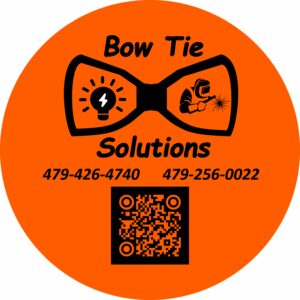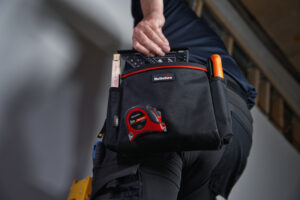Written by Don Schultz, Senior Technical Consultant for trueCABLE, Fluke Networks Copper/Fiber CCTT, BICSI INSTC, INSTF Certified
Wired networks are the backbone and foundation of any properly established local area network (LAN). Even as 5G UW, 4GLTE, Wi-Fi 6E, and advanced Wi-Fi 7 are becoming the norm, there’s an organized cabling system of sorts behind it all. Given that we’re discussing the base layer of the network, it occurs to me that we should really be talking about the “wired part” of the “back to basics” starting point. Why? Good…
Over time, a great deal of well-intentioned but misleading information has reached the Internet. This happens when best practices and compliance with standards are confused with one-time success stories or strong personal beliefs resulting from narrow experiences. Inevitably, these beliefs are repeated and then repeated as truth. The truth is that what worked well for one person may not work well for another, or at all. Casual success, while ignoring all actual industry best practices and guidelines, cannot and should not serve as guidance for future installations.
Even the term “Ethernet cable” itself can sometimes be a confusing term and also be a source of controversy. Not only are there common misconceptions about the name of the cable in question, but these misconceptions extend to different types of cables and what they are suitable for. In this blog, we’ll cover where misunderstandings and misconceptions occur. Let’s get this straight, shall we?
As usual, trueCABLE has created a companion (not a replacement) video to this blog which helps to further clarify our current topic. Please take a look…but be sure to come back here and keep reading as the written blog adds more information.
Misconception: What is an Ethernet cable?
One might think that since this term has been around for decades, we would omit this part, but not entirely.
It is a common misconception that the category of twisted pair copper cable is “Ethernet cable”. While Cat5e, Cat6, and other twisted copper grade cables are specifically designed to carry Ethernet data packets, they are capable of carrying more types of signals than just Ethernet packets. HDBASE-T is a great example of this, where data packets are intended for video systems. Ethernet is a protocol It defines how data is formed, generated, error-checked, and then transferred between devices on the network so that everything can “talk” to each other. The protocols are referred to (for example) as 100BASE-TX, 1000BASE-T, etc. The cable itself facilitates data transfer, but it’s not technically part of the discussion. Why? Well, different types of physical cables can transmit Ethernet data packets. they:
But it is easy to understand how this misconception formed. Copper twisted pair class like cable Cat6 It has been used to transfer Ethernet data for a long time and is very popular for this task. Thus, copper grade cable became incorporated as “Ethernet cable”. It doesn’t hurt to refer to twisted pair cables this way as long as everyone understands what you’re talking about, but don’t assume they do!
Myth: Choose the largest, highest-rated Ethernet patch cables for best results
The quality of an Ethernet patch cord is critical and often overlooked
Be careful in choosing Ethernet patch cords. There are somewhat outrageous marketing claims designed to pull the wool over your eyes.
Shielded patch cords are of limited use, especially if the permanently installed solid copper Ethernet cable is already shielded and properly grounded. Cat7 Ethernet patch cords, which use 8P8C (also known as RJ45) plugs, are automatically counterfeit. The ISO/IEC 11801 specification specifies GG45 and TERA connectors for Cat7. “RJ45” connectors are not part of this specification. Dealing with thick Ethernet patch cords is more difficult when connecting a patch panel and a patch cord manager. Unnecessarily high shielding and class makes the patch cord thick! When used as a complete communications channel (just one cable from the switch to the end device), most patch cords work well enough, but if there is a formal regulated cabling system, the quality of the patch cord is crucial. Always choose 100% rated and certified patch cords to be sure, as proper TIA patch cord testing is beyond the capabilities of most people.
The long and short of it is to choose a quality patch cord that passes the component evaluation test. It doesn’t matter what category it’s supposed to be rated or what level of protection there is if an Ethernet patch cord doesn’t work.

Ethernet patch cords have been a constant quality concern over the past several years. the reason? Most of the imported patch cords are fake and do not meet industry standards.
I suggest you take a closer look at Introducing trueCABLE’s new Cat6 patch cable – optimized for high-performance network upgrades in 2024 and beyond.
Myth: A shielded Ethernet cable is better than an unshielded Ethernet cable


Unshielded Ethernet and shielded Ethernet
This is a recurring and persistent myth. How did this legend start? This myth started due to outdated notions about interference associated with analog communications and audio and video cables where shielding was of actual benefit to analog signal quality. The truth is that an unshielded Ethernet cable already has built-in protection of some sort due to fluctuations in the pairs and the overall construction of the cable. Unshielded grade twisted pair cable will ignore the majority of common EMI/RFI found in office and residential environments.
There are cases where Ethernet shielded Required, or at least a very good idea, but these things are uncommon. Environments such as:
Radio stations Military and civilian radar sites Factory floors using powerful equipment and extremely high voltages Hospitals equipped with medical equipment such as MRI and CT machines
…There are potentially situations where protected Ethernet might be of benefit, but it’s not automatic. The distance can also be used to prevent interference in addition to metal grounded paths (ENT channel).
If in doubt, please check back Top 5 things to consider when running an Ethernet cable.

Do not install shielded Ethernet cable unless you have a clear and obvious reason to do so. There are penalties such as cost and installation complexity that come with this!
Myth: Use Cat6A, Cat7, or Cat8 Ethernet cable to ensure high quality
Although you should match your twisted copper grade cable to the speeds you intend to run with an eye toward the future, you should be aware that overbuying will likely cost you more money and you will get nothing in return. Additionally, a higher-end Ethernet cable is not an indication of high quality.
Consider these points:
Residential Internet speeds are 2.5 Gbps and lower as of 2025. Even “low” cat5e This can be handled brilliantly, at a low cost and with easy installation! Typically, more features added to a cable also increase installation complexity and cost. Installation quality, such as terminations and attention to detail, has a much greater impact on cable-grade installation performance.
You can’t go faster than your fastest piece of equipment. Are you limited to 1 Gbps for the foreseeable future? Most people are.
Cat8 Ethernet cable Only able to reach its maximum speed of 100 feet. Beyond 100 feet, it works just like Cat6A. In short, once you go beyond 100 feet or you don’t need to push 25Gbps or 40Gbps at any distance, you’re wasting your money and dramatically increasing the difficulty of installation at the same time.
Recommend trueCable Unshielded (U/UTP) Cat6 as your starting point. It handles all the expected residential speeds while remaining low cost and easy to work with.
Myth: Cat5e is dead and buried
If I had a US dollar for every time I heard this statement, I would now own a small country. Although Cat5e is certainly older and gradually getting longer teeth, it still serves the vast majority of residential installations well. Cat5e, when installed correctly, achieves speeds of 2.5GBASE-T (2.5 Gbps or 2500 Mbps) easily assuming you have that speed for the equipment – which you probably don’t. That’s fast, and the bonus is that the solid copper Cat5e will handle 100W of PoE power. Here are some other useful Cat5e points to consider for certain installations:
Cat5e is easier to terminate Cat5e is much lighter than higher tier cables The weight of the cable manufacturer is a real concern in some installations, thinner and thinner Cat5e may be what is needed for tight spaces installations on limited budgets
The two primary downsides of Cat5e are:
Dealing with Boo. In larger packages, especially packages in conduit, Cat5e using 24AWG connectors is more limited in the number of cables as the DC wattage (and heat generated) increases. See Power over Ethernet (PoE) installation best practices. For details and charts! Home Internet speeds are now 2.5 Gbps, so Cat5e won’t be able to handle the next speed boost of 5 Gbps.

Choose Cat5e when it makes sense to do so without guilt or buyer’s remorse. If you have doubts, trueCABLE is ready to provide help and advice!
Myth: Twisted copper Ethernet cable is broken. Use fiber optics instead.
Fiber optics is undoubtedly a wonderful technology. Using pulses of light to transfer data is great for the following reasons:
Fiber optic cable is completely resistant to EMI and RFI Fiber optic cable does not care about ambient temperatures, so optical fiber insertion loss (signal degradation) will not occur due to high temperatures. Fiber cable is capable of transmitting for kilometers over a single section, or over shorter distances and at extremely high speeds (think 100 Gbps) Much more communications circuits can be accommodated in a fiber optic cable than any type of copper communications cable making the cable thin and light Extremely
However, one thing fiberglass cores cannot do is transmit electricity (DC power) to power PoE (Power over Ethernet) devices like cameras and WiFi access points over a single cable. Sure, you can add some copper connectors with fiber connectors to get some low-voltage electricity to a powered device, but the vast majority of PoE devices are not hybrid fiber/copper in nature and use a single cable for the task.
Here are some additional considerations as to why copper twisted pair Ethernet cable is far from dead:
Copper Ethernet is already installed in a large number of homes and businesses. Technologically, copper Ethernet class cable is well understood and accessible even to do-it-yourself installers. Copper grade cable works very well up to 10Gbps
Given the above, twisted pair copper cables will be with us for a very long time and will likely be phased out over the course of decades. All combinations become hybrids anyway, leveraging the right technology at the right price for the intended need. Long distance links are served by optical fiber. Areas that cannot be wired, or where this is impractical, are served by WiFi. Small areas that need a wired connection (but fiber would be impractical) are better served by the tried-and-true Ethernet cable.
conclusion
So, there you have it. We’ve debunked some common misconceptions and myths about Ethernet cable and set the record straight. Over time, opinions become fact and incorrect information becomes canon. Humans like to categorize and simplify things, which is natural. Humans also like to distill highly technical concepts down to the lowest common denominator as they are easier to remember. When all of these factors combine to sabotage a well-implemented communications cabling system, we need to step back and fix it! And with that he said…
Happy communication!!
trueCABLE provides the information on our website, including the “Cable Academy” blog and live chat support, as a service to our customers and other visitors to our website subject to our website. Terms and Conditions. Although the information contained on this site relates to data networking and electrical issues, it is not professional advice and any reliance on such material is at your own risk.




